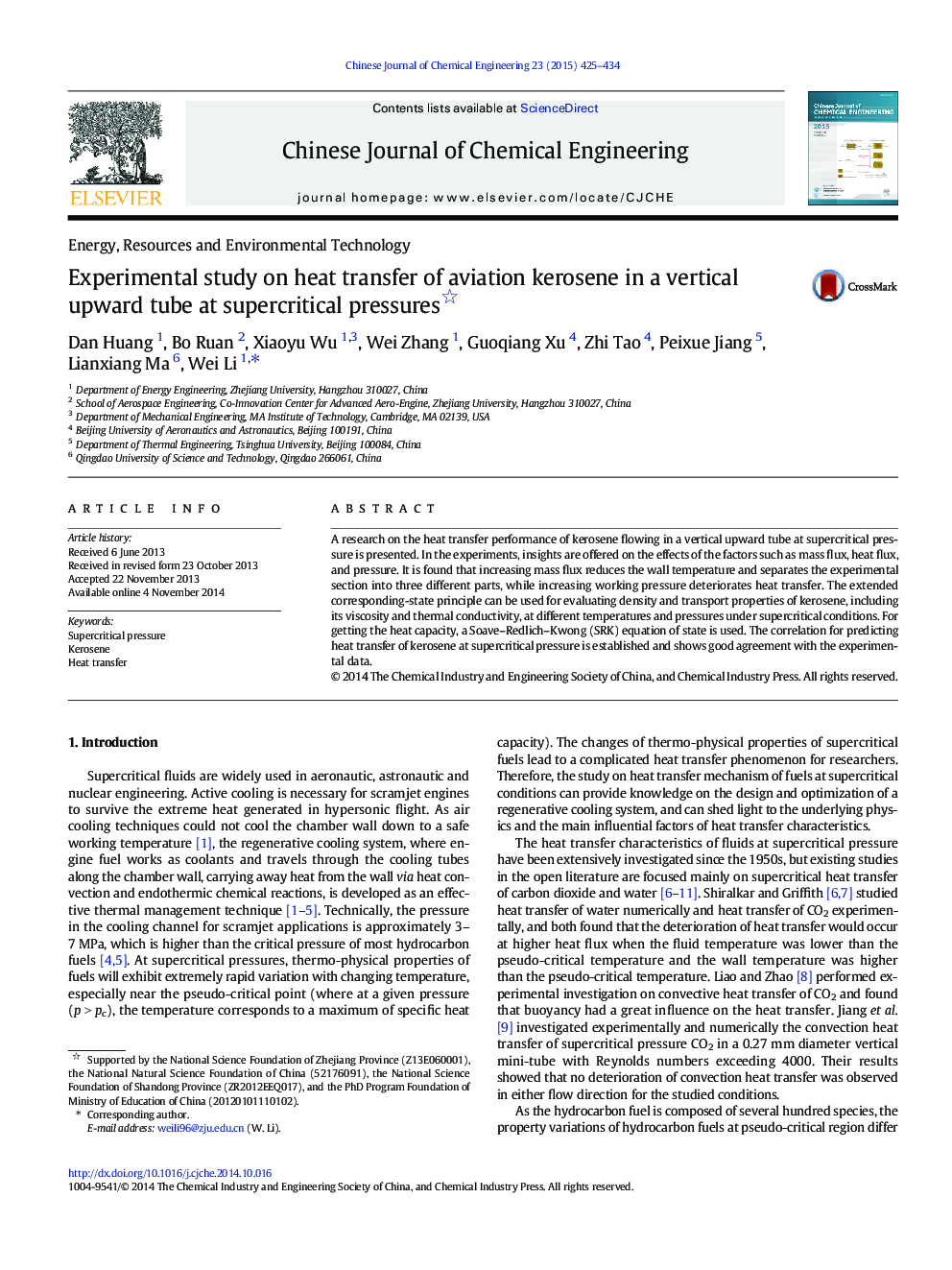| Article ID | Journal | Published Year | Pages | File Type |
|---|---|---|---|---|
| 167162 | Chinese Journal of Chemical Engineering | 2015 | 10 Pages |
A research on the heat transfer performance of kerosene flowing in a vertical upward tube at supercritical pressure is presented. In the experiments, insights are offered on the effects of the factors such as mass flux, heat flux, and pressure. It is found that increasing mass flux reduces the wall temperature and separates the experimental section into three different parts, while increasing working pressure deteriorates heat transfer. The extended corresponding-state principle can be used for evaluating density and transport properties of kerosene, including its viscosity and thermal conductivity, at different temperatures and pressures under supercritical conditions. For getting the heat capacity, a Soave–Redlich–Kwong (SRK) equation of state is used. The correlation for predicting heat transfer of kerosene at supercritical pressure is established and shows good agreement with the experimental data.
Graphical AbstractThe figure schematically shows the setup of the experimental system. The fuel stored in the fuel tank is pumped through a mesh filter towards the test section and is heated and tested at supercritical conditions. After the testing, the liquid is condensed, recollected and fed into the reservoir manually to maintain the loop operation. In the experiments, insights are offered on the effects of the factors such as mass flux, heat flux, and pressure. It is found that increasing mass flux reduces the wall temperature and separates the experimental section into three different parts, while increasing working pressure deteriorates heat transfer. The effects of heat flux on heat transfer are complicated.Figure optionsDownload full-size imageDownload as PowerPoint slide
